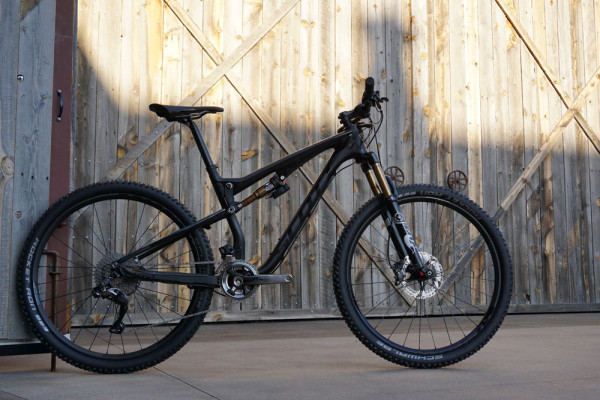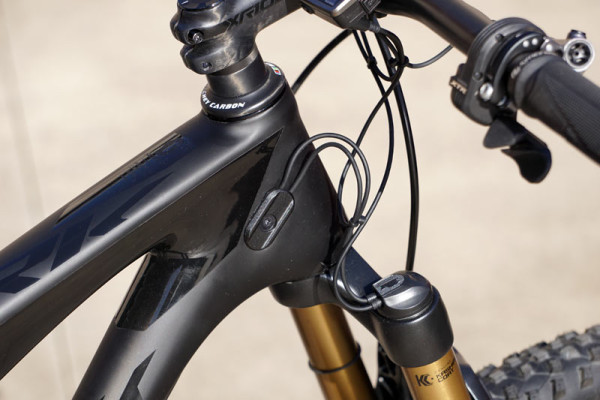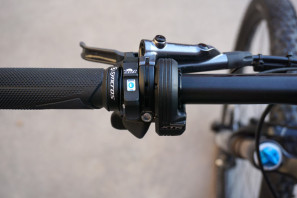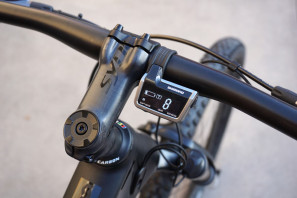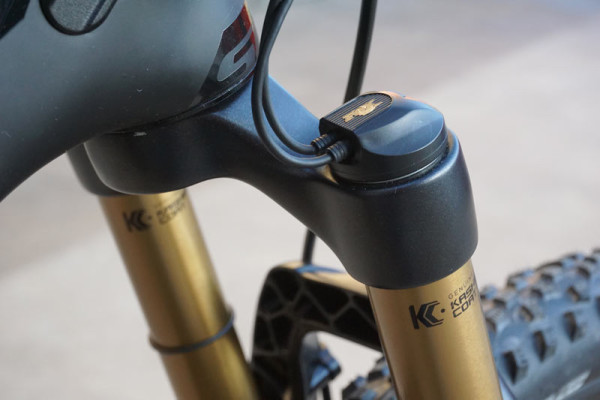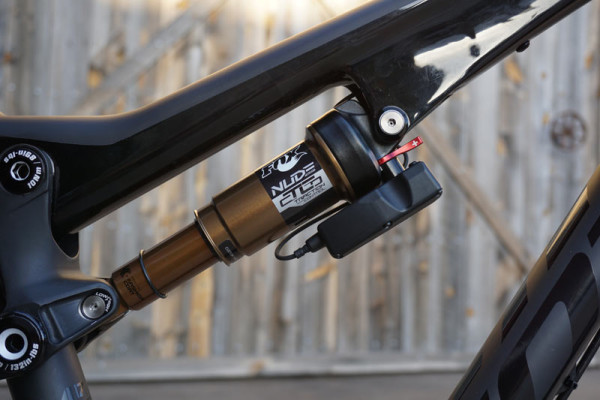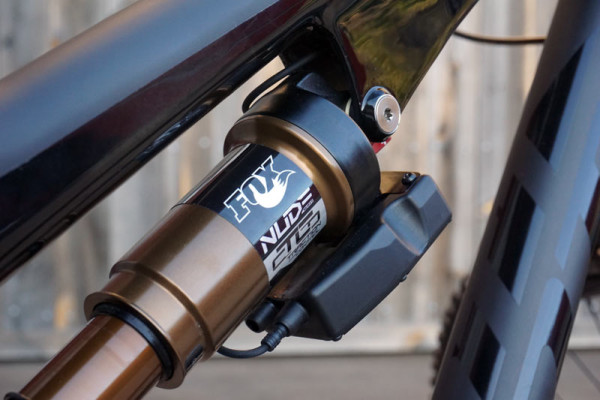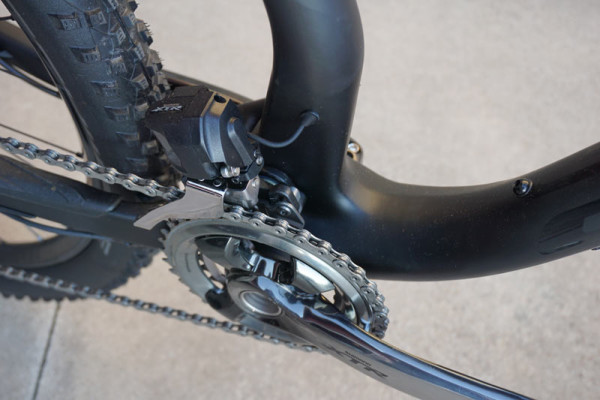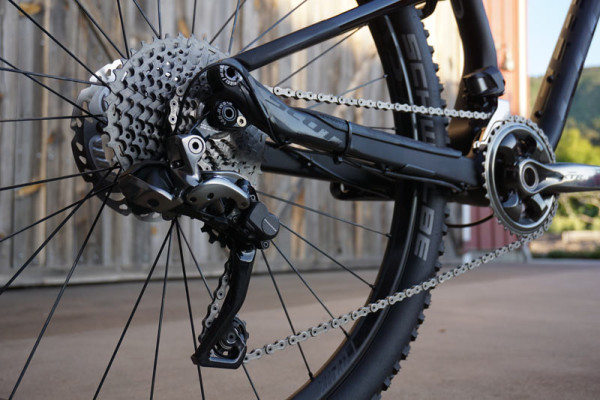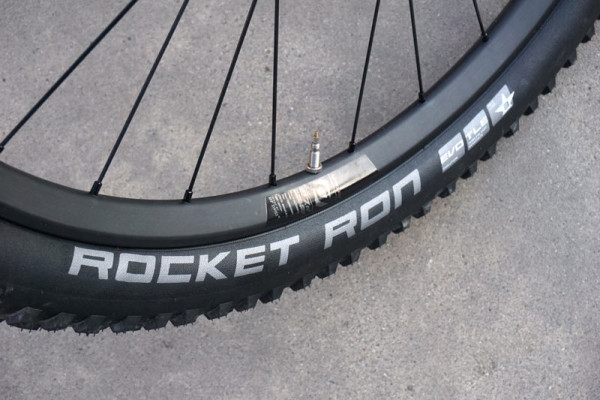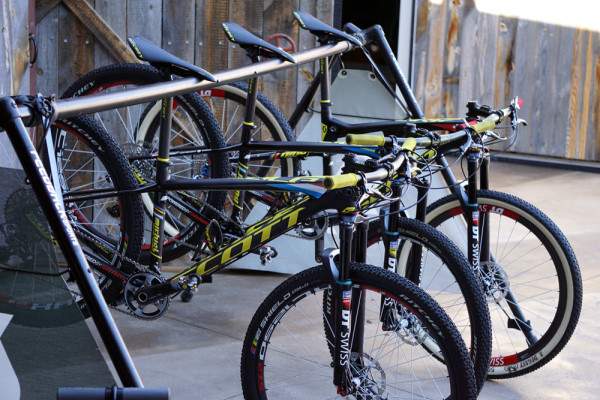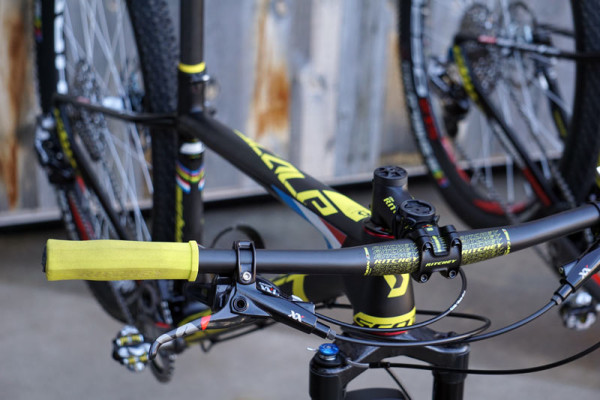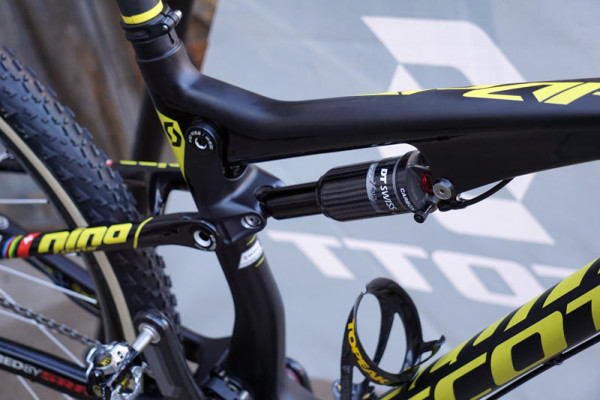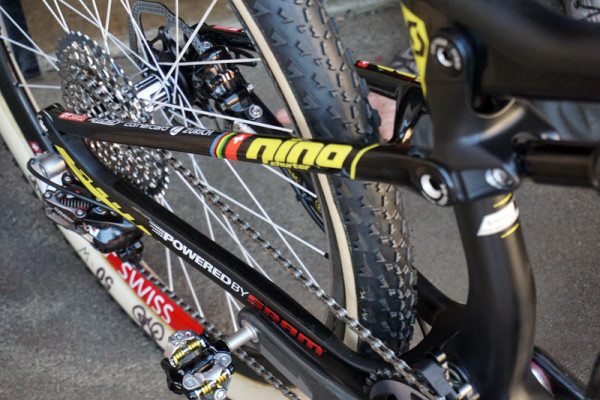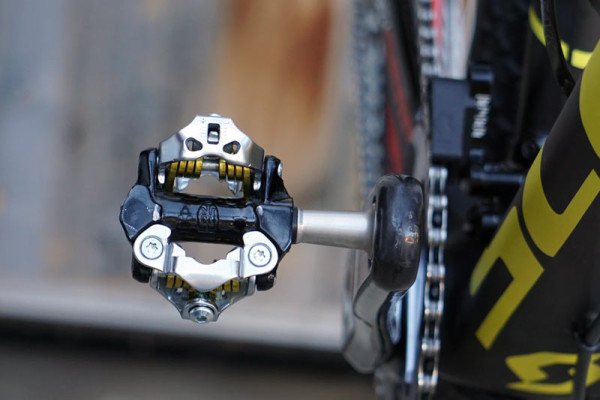The Scott Spark frame has carried over virtually unchanged since its launch in 2012, save for the switch from 26″ to 27.5″ wheels (and the 29er stays, too, of course). What has changed are the parts adorning it, and there’s been no shortage of testing and tweaking under the pros to get to this top of the line, spare no expense Ultimate Di2 model for 2015.
The main goal was to integrate two electronic systems, running both the Fox iCTD suspension and the XTR Di2 off a single battery, creating a race optimized full suspension bike. It’s built off the existing Spark 120mm travel platform, but adds new electronic suspension controls and a proprietary new eNude rear shock developed with Fox.
Controlling it all are three switches up front, the two standard Shimano XTR Di2 shifters, and the electronic evolution of Scott’s TwinLoc rotary lever that simultaneously switches through three modes. It’s built by Shimano with a custom actuator attached to the fork and Fox-made switch specific to this shock and fork pairing…
The addition of electronics cleans up the cockpit of all the cables that used to protrude from their Twinloc lever, adding two to the already fully equipped 2x drivetrain. Six cable housings/brake hoses in front of the bar can clutter things up, so a couple wires is a big improvement. And they enter the frame so cleanly, too!
One wire goes from the rotary lockout control switch to the fork, then to the battery and internal junction box, which splits things to go to the derailleurs, rear shock and back to the stock XTR Di2 gear display unit. Or all that in reverse…but thanks to eTube, it all works in harmony.
The rotary suspension control switch nuzzles up to the brake lever mount, filling the space usually left open between it and the grips. Compared to a traditional lockout lever, it’s faster and far more ergonomic. Pro’s we’ve spoken to are stoked on it, saying it makes it so easy to switch that they end up using it hundreds of times for even the shortest sprint sections.
The Di2 display shows the gear, battery level and suspension mode, tying everything together and providing an external charging port for the battery.
The new Fox eNude rear shock uses an electronic interface for switching modes. For them, it’s iCTCD, which refers to Climb, Traction Control and Descend.
It not only changes the compression damping, but going from Descend to TC (aka Trail) mode, it actually raises the sag point by closing off an auxiliary air chamber around the top of the shock. That drops air volume, which increases the air pressure relative to everything else that’s going on, so the sag ends up being less.
It’s still an active suspension, just not as soft and travel is reduced from 120mm to 100mm. So, you maintain full pedaling efficiency and traction compared to locking it out, but it’s a bit firmer. The fork also drops to 100mm, but it’s a mechanical change rather than an air volume change.
The bike also has a flippable chip at the rear shock mount that allows further, manual geometry adjustment. A manual rebound knob has an extended red lever to make it easier to reach between the mount and the electronic control box.
The battery is hidden inside the top tube, just in front of the upper shock mount. To access and remove it, you simply detach the upper shock mount and loosen a single screw on the underside of the top tube and it’ll slide out. That single screw holds the battery tight so it’s not rattling around in the frame or stuffed in there with bubble wrap like some of the early prototypes the Scott 3ROX team was running.
While many top level race bikes have gone to a single front chainring, they’re keeping the double here. And having ridden XTR Di2 ourselves, we see no downside to it.
The naming scheme of the model includes 700, which refers to 27.5” wheels, and for now this configuration is only available in this wheel size. There’s no 900 (29er) for now, and that’s because of the 29er’s front triangle shape. It’s different and a water bottle would hit the rear shock’s electronic control box, and they want you to be able to use a water bottle. Yes, they’re working on a solution.
Frameset weight is 1,940g including shock and hardware. Complete bike is claimed at 10.4kg (22.93lb).
Pricing is at the level you’d expect: $12,499 / €9,799 complete with Syncros FL1.0 and XR1.0 components with XR1.0 carbon wheels (rims are made by DT Swiss). The fork is a Fox FLOAT CTD Factory.
Sitting close by were several of the Scott team riders’ bikes. We’ll have a full run down on Nino Schurter’s current World Cup race bike shortly, but a few photos in the meantime never hurts.
As always, plenty of Ritchey and DT Swiss parts adorn the team bikes, including the new limited edition DT Swiss OPM Race suspension forks we covered here and here.
Thanks to tubulars, XX1 and carbon suspension bits, Nino’s bike comes in at a claimed 8.8kg (19.4lb).
Word is this new Ritchey V6 pedal is a bit different than what we saw in prototype form at the Meribel World Cup last year and similar to some concepts shown at Eurobike.
